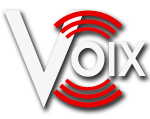Basic rate interface (BRI, 2B+D, 2B1D) is an Integrated Services Digital Network configuration defined in the physical layer standard I.430 produced by the ITU. This configuration consists of two 64 kbit/s "bearer" channels (B channels) and one 16 kbit/s "data" channel (D channel). The B channels are used for voice or user data, and the D channel is used for any combination of: data, control/signalling and X.25 packet networking. The two B channels can be bonded together giving a total data rate of 128 kbit/s. BRI is the kind of ISDN interface most likely to be found in residential service.
The I.430 protocol defines 48-bit packets comprising 16 bits from the B1 channel, 16 bits from B2 channel, 4 bits from the D channel, and 12 bits used for synchronization purposes. These packets are sent at a rate of 4 kHz, giving the data rates listed above for a maximum possible throughput of 144 kbit/s.

